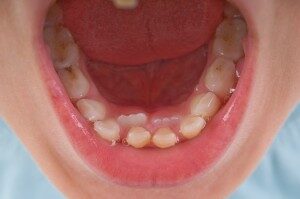Two-phase orthodontic treatment generally means that part of the orthodontic treatment is completed while the patient still has some baby teeth. This part of the treatment is referred to as Phase I and is usually completed sometime between ages 7-10. After the eruption of the remaining adult teeth, the second phase of orthodontic treatment involving full upper and lower braces is completed. This part of the treatment is referred to as Phase II. The idea behind this type of treatment is that some of the more severe orthodontic problems can be treated more effectively by treating them in two stages.

Some examples of problems that can be treated effectively by doing two-phase orthodontic treatment are:
- Creating spacing for severely crowded teeth or repositioning teeth that are developing incorrectly
- Creating facial balance through influencing jaw growth
- Reducing the risk of fracture or uneven wear to protruding teeth or teeth in crossbite
- Preserving space for teeth that have not erupted
- Correcting harmful habits like thumb sucking
- Preventing damage to gum tissue around teeth that are erupting outside of a normal position
The type of appliances that are used in Phase I while patients still have baby teeth varies a lot. It can be as simple as a special retainer to correct one tooth that is really crooked or as complicated as partial upper and lower braces with a palatal expander. If a Phase I treatment has already been completed, Phase II is generally more straightforward involving traditional braces or Invisalign as most of the more severe orthodontic problems have already been corrected in Phase I treatment. Minor problems like mild spacing or crowding, mild overbites, and mild to moderate misalignment can generally be treated just as effectively with a single phase treatment at around age 11-13 depending on the age of eruption of the adult teeth.







 Website Powered by Sesame 24-7™
Website Powered by Sesame 24-7™